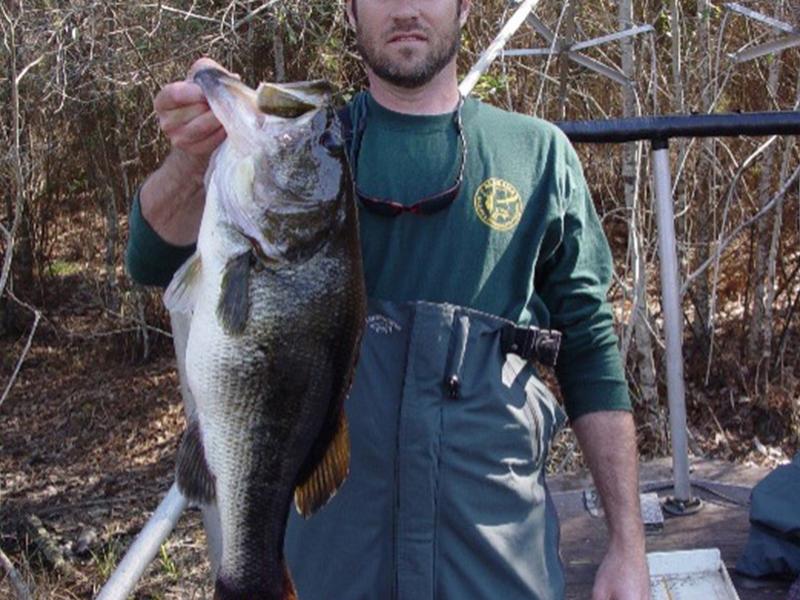Introduction
WFF fisheries biologists are often seen on reservoirs during the spring and fall collecting sport fish for standardized reservoir sampling. Through five district offices, WFF manages 45 public reservoirs encompassing more than half a million acres of water throughout the state. Each reservoir is sampled on a routine basis to monitor the population structure of its sport fish species. These samples are conducted in a standardized manner according to the guidelines of the Alabama Reservoir Management Manual so that changes in population characteristics can be monitored over time by comparing to previous samples. Most reservoirs are sampled on a 3-year cycle. Management recommendations such as length and creel limits are determined from this research.
Sampling
Various sampling gear is used to obtain standardized samples. That gear is specific to the fish that the biologists are targeting. In the spring, biologists use specially designed electrofishing boats that temporarily stun fish so they can be netted. Spring electrofishing surveys usually target Largemouth Bass, Spotted Bass, and crappie. On occasion biologists also collect other species such as Bluegill Sunfish, Redear Sunfish, shad, or catfish. In the fall and early winter, gill nets and trap nets are used to collect fish species that prefer open water, or deep areas where electrofishing is not effective. Gill nets are made of monofilament, and capture fish when they swim into it. Gill nets are primarily used to collect Striped Bass, Hybrid Striped Bass, White Bass, Sauger, and Walleye. Trap nets are box-shaped nets made of nylon that are specifically designed to collect young crappie. They are an effective tool to evaluate young crappie produced from the previous spring, which provides a good indication of the abundance of adults in future years
Fish Collection & Measurement
Fish collected in reservoir samples are measured for total length and weight, and age is determined. The length and weight data combined, allow biologists to examine how plump the fish are, which is an indication of whether or not the appropriate amount of food is available. Length data is used to assess whether the correct proportion of catchable size fish are available for anglers to harvest. Age data in conjunction with length data allows biologists to determine how fast fish are growing. In order to age fish, the inner ear bone (otolith) must be removed and looked at under a microscope. Fish begin laying down a new circular mark on the otolith each spring. The circular marks on the otolith correspond to years of age. These circular marks, or rings, are formed because calcium is deposited at a constant rate no matter how fast the fish is growing. During winter, when the fish is not actively growing, the calcium is deposited in a more concentrated area, and leaves behind a ring once the fish’s growth-rate increases as water temperatures become warmer. The number of fish collected at each age is used to determine how quickly fish are dying out of the population, either from fishing or natural causes.
All of the data is analyzed and compared to previous samples from the individual reservoir and to statewide average data from all reservoirs. Biologists can then determine if harvest regulations need to be changed to improve the fishery. The most common type of regulation on a reservoir fish population is a daily creel limit, or simply how many fish an angler can keep each day. Daily creel limits are used to prevent angler harvest from becoming too high to sustain the fishery. Length limits are another regulation used when fishing pressure or angler harvest is too high on fish of a particular size. Length limits are sometimes used to protect young fish so they can reach maturity or to increase the number of large fish for anglers.












